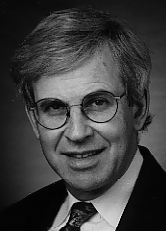
Linn W. Hobbs
Home
SIMSMC Philosophy
Description
Objectives and Design
Instructors
Program Structure
Modules
Evening Lectures
Field Trips
Schedule
June 2005 SIMSMC
Participants
Module 1
Module 2
June 2004 SIMSMC
Participants
Module 1
Module 2
June 2003 SIMSMC
Participants
Module 1
Module 2
June 2002 SIMSMC
Participants
Module 1
Module 2
Comments
Travel & Housing
Who Should Apply?
NSF Support
How to contact us
Requirements for
Applicants
APPLY!

Professor of Materials
Room 13-4054, 77 Mass. Ave.,
Cambridge, MA 02139
617-253-6835 (phone)
617-252-1020 (fax)
hobbs@mit.edu
BSc. Materials Science, Northwestern University, 1966
D.Phil Science of Materials, Oxford University (Marshall Scholar), 1972
Archaeological Materials Interests
Linn Hobbs pursues teaching or research interests in three archaeological materials areas: mortars, clockmaking materials, and glass.
Mortars literally have held together great civilizations; cementitious materials of interest include Egyptian gypsum mortars and plasters, Greek lime mortars, Roman pozzolanic concrete, and Victorian portland cement.
Brass has been a major constituent material of clocks since the 16th century and a scarce resource in colonial America, largely supplied from the British motherland. Compositional and impurity analyses provide key evidence for the development of indigenous clockmaking and its gradual supplantation by British factory production.
Utilitarian use of silicate glasses dates back to Mesopotamian civilizations of the Near-East and extends through the glassblowing artistry of the 16th-19th centuries to the modern container industry of today. Surprisingly, the atomic structure of even simple glasses is not known with certainty, although the influence of structure on properties has long been manipulated empirically.
Research Interests
Professor Hobbs' research activities center on characterization, using electron microscopy and diffraction methods of atomic and extended defect structures and microstructures of inorganic non-metals introduced by radiation, implantation, or chemically-driven compositional change. One major program addresses the effects of strong radiation fields, such as found in nuclear reactors, radioactive waste storage, or ion implantation, on the microstructural integrity of ceramics, glasses and semiconductors. An important emphasis of this effort is on radiation-induced crystal-to-glass transformations, studied using topological and molecular dynamics modeling.
Another research area addresses materials and coatings used in orthopaedic and prosthodontic implants and their interaction with the body. Two applications are biomineralization to form bone apposing hydroxyapatite-coated femoral stems in hip prostheses and zirconium oxide scales formed on oxidized zirconium femoral condyles in total knee prostheses.
Selected Publications
The Ultrastructure of the Plasma-Sprayed Hydroxyapatite-Bone Interface Predisposing to Bone Building (with A. Porter, V.B. Rosen and M. Spector), Biomaterials (2001), in press.
The Topology of Silica Networks (with C. Esther Jesurum and Bonnie Berger), Chapter 1 in Structure and Imperfections in Amorphous and Crystalline Silica, J.-P. Duraud, R.A.B. Devine and E. Dooryhee, Eds., John Wiley and Sons: 1-47 (2000).
Roman Concrete and the Roman Architectural Revolution (with H. Lechtman), in Ceramics and Civilization, Vol. 3, W.D. Kingery, Ed., American Ceramic Society: 81-128 (1987).
For more information, click here